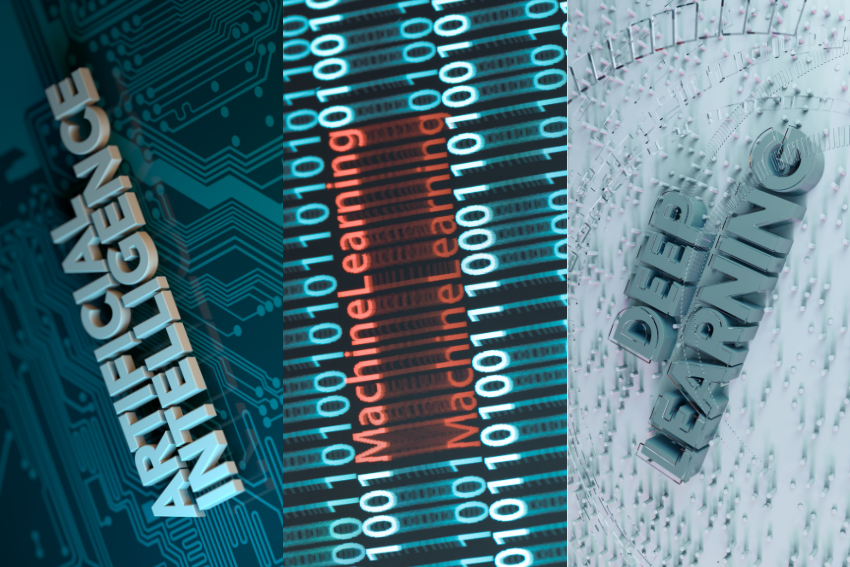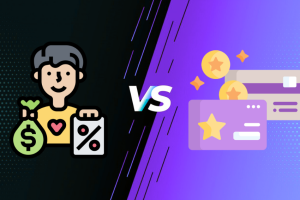Nowadays, software developers are facing issues while keeping up with the evolution of Artificial Intelligence (AI) technologies. From AI-powered tools to ML (Machine Learning) models, there has been greater productivity while integrating into everyday applications. And DL (Deep Learning) systems are like such autonomous decision-making ones, where expectations have never been much higher. This shows how technology gets transformed and how machines process insightful information and solve problems. You should know the comparison among AI, ML and DL, as these are no longer optional. Each of these technologies is significant for establishing modern and smarter digital solutions.

For the developers, having a clear knowledge of AI, ML, and DL can lead to better-informed decisions, clear project outputs, and effective incorporation of smart features. In the dynamic world of tech, while you are establishing a chatbot, building a predictive model, or doing any other advanced things, knowing which tech fits your task can save time, cost, and also minimize complexity.
In this insightful tech article, you will learn how AI, ML, and DL technologies are shaping the software development process in a simple & impactful way. From basic understanding to use cases, you will have a clear understanding of the way to navigate as a developer maintaining the software. Let’s Explore!
What is AI in Software Development?
AI is changing the software development process by integrating advanced tools and techniques, which leads to much greater scalability, productivity, and innovation. Basically, AI software development is defined as the utilization of AI technologies to automate and enhance various stages in the SDLC (Software Development Life Cycle), starting from initial coding to testing & launching in the work process.
This includes tasks that include understanding Natural Language (NL), recognizing learning patterns, taking strategic decisions, and also learning from data inputs. In particular, GenAI & Large Language Models (LLMs) streamline the software development cycle with automation, starting from idea generation to testing and coding. The collaboration with the developers, Gen AI, can change the ideas into requirements, which results in offering user stories and basic overviews written from the viewpoint of end users and generates test cases, code, and documentation. This, as a result, speeds up the development process and also improves the final-stage product. Programming languages like Python, Java are also quite important while dealing with the development process. You can check out the guide on the advantages and disadvantages of Python for some insightful facts.
The AI software development process tends to change the ways developers design, think, develop, document, deliver, and debug errors in the software process. AI acts as a mediator for the developers while partnering with teammates, stakeholders, and clients.
Benefits of AI in Software Development
Some of the primary benefits while you are having AI in software development are;
- Helps in Automating Repetitive tasks
- Streamlines Operations
- Minimizes Errors
- Offers Real-Time Coding Suggestions
- Lowers Development Cost
- Faster Time to Market
- Wider Accessibility to Users
Most importantly, AI in software development is not limited only to data scientists or any experts; it can be rapidly accessible to non-technical persons without any in-depth skill set. While skilled developers and data scientists can use the full potential of AI to make some advanced systems, non-technical ones can utilize AI via no-code or low-code platforms.
The No-Code and Low-Code Platforms help democratize the software development process with some advanced features like APIs (Application Program Interfaces) that provide user-friendly interfaces that also help non-technical individuals to make apps, automate the processes, and incorporate AI-driven solutions.
How is ML different from AI in Software Development?
ML (Machine Learning) is basically the segment of AI that focuses on machines and computers mimicking human ability to perform tasks automatically. Mainly with experience and exposure towards data, ML improves the performance and accuracy of the work process.
As per the Berkeley report, it has been determined that the ML has an algorithm that mainly has three phases, like:
Decision Stage
This initial phase in the ML algorithm involves a mix of calculations and prediction or classification based on the input data.
Error Functionality
This is basically the stage where it is analyzed whether the prediction of the ML model is correct or not. It determines the accuracy of the power of prediction, enhancing the accuracy.
Optimization Process
This mainly corrects the misses by the model and optimizes the results accordingly. With this stage, there are updates on the decision process, which gives optimized results.
Types of ML Algorithms in Development
Some common ML algorithms associated with the software development process for developers are;
Neural Networks
This particular ML algorithm works as per simulating the human brain, with a huge number of processing nodes. These are good at identifying patterns and play a significant role in various applications like natural language translation, image recognition & processing, and also speech recognition.
Linear Regression
This specific algorithm helps you to predict numerical values based on the linear relationship among different kinds of values. For example, this approach is used to predict house prices based on historical data for a region.
Logistic Regression
As a supervised learning form, this algorithm helps in predictions for categorical answers like “yes/no” to the questions. This is used for applications such as classifying spam and quality control.
Clustering
This involves an unsupervised learning approach that identifies data patterns so that they can be grouped. Developers, with the help of this algorithm, group similar data points and uncover hidden data patterns and structures within the data sets.
Decision Trees
In the case of decision trees, this algorithm can be used to predict both numerical values and data classification. Involves a branching sequence of linked decisions that represent a tree. This is easy to validate and audit, thus helping developers to make
Random Forests
This ML algorithm helps developers by offering a visual representation approach to make the right decisions and also predict outcomes, used for classification & regression tasks, breaking down complicated things into simpler things, and representing a tree-like structure.
ML is also considered a subset of AI that helps systems to learn and improve from experience. With an explicit level of programming, ML uses algorithms to analyze larger amounts of data, learn from it, and offer informed decisions. ML has great purposes in software development, with some potential capabilities like;
- This allows a machine to learn autonomously from existing data
- Helps to build machines for higher-level tasks like creative problem-solving & innovation
- Establish better collaboration & communication for the developers
- Offers predictive analytics for project management
- Helps in automated code review
- Identifies errors and bugs
- Enhancing cybersecurity & establishing customer segmentation
In the aspect of developers’ workflow, ML is like;
- You have to gather data
- Select the algorithm (for e.g., linear regression for prediction, decision trees in terms of classification)
- Train your model using frameworks like;
- Scikit-learn: This ML algorithm is mainly for fast experimentation.
- XGBoost: This gradient-boosting algorithm is especially useful for structured data and is a high-performance one.
- LightGBM: This one is optimized for speed & memory.
- Finally, deploying the model into the backend or application to make some real-time predictions out there.
What is Deep Learning & what is its importance for Developers?
Deep Learning is the subset of ML that mainly uses multi-layered neural networks, known as deep neural networks, which stimulate the complex decision-making power of the human brain. The major difference from ML is that deep learning uses multiple layers to learn from data using AI, and in ML, there is a broader range of algorithms that don’t have any kind of neural network.
With the aspect of artificial neural networks, Deep Learning can solve complicated problems and excel at large-scale processing of volumes of data, including images, videos, text, and audio, without any kind of manual intervention, as it happens in the case of traditional machine learning.
You can also consider a scenario where a traditional ML can only predict the house prices with some numeric features, while deep learning can look into the image of your house and give a visualization automatically. Add-on estimates based on such an approach and approximately estimate the value of the house without any external help.
Some of the prime reasons that make it suitable for developers in their work process;
- Has some of the smartest features like recommendations, search results, chats, and more.
- Can manage unstructured data like photos, audio, and text files without any manual help.
- Can integrate easily with GCP, AWS, or even Azure for training & development purposes
- By transferring learning ability & open-source pre-trained models’ integration, there is faster innovation.
Deep learning is no more just for researchers but is also said to be a practical tool that is changing the way modern software is built and helping developers.
Now that you have an understanding of AI, ML, and DL in the development process, let’s elaborate what are main differences associated with these technologies.
AI, ML and DL: Key Differences
For the developers, it is very significant to understand the core differences between AI, ML, and Deep Learning and associate their integration in work processes. And this is simply not academic, but directly affects the choice of your tools, resources, and also implementation strategies. This gives the right clarity to the developers while selecting the right solution for the problem, and also optimizes their development process. Let’s see the core differences in the tabular representation below.
| Aspects | Artificial Intelligence | Machine Learning | Deep Learning |
|---|---|---|---|
| Objective | Build systems that can imitate human intelligence. | Teaches machines to learn from input data& enhances over time. | With multi-layer neural networks, it enables learning complex patterns. |
| Complexity | It is broad and includes rule-based systems and logic planning. | It is moderate and relies on statistical things like regression, decision trees, and random forests. | It is highly complex and has deep neural networks with multiple layers. |
| Input Data | Involves any type of data, consisting of unstructured, structured, or semi-structured. | Involves structured or semi-structured data based on moderate data inputs. | Involves larger sets of data, of unlabeled or labeled ones. |
| Interpretability | This is basically transparent. | Easy to interpret. | It’s like a black box- hard to interpret. |
| Hardware Requirements | Regular CPUs are sufficient | Requires CPUs, but GPUs can be optional | GPUs / TPUs are required for the neural networks |
| Efficiency | Its efficiency is provided by ML and DL accordingly. | Less efficient than DL, as it does not work for a longer dimension. | More powerful than ML, as it can interpret larger amounts of data. |
| Time of Training | Non or minimal | Short to Moderate | Longer time |
Let’s explore some of the real-world cases that can help you to have the purpose and usability factor for each of the technologies as discussed in this article.
AI, ML and DL: Real World Use Cases
You should also know the real-world use cases of how these technologies show up in software development for developers, which helps them connect with reality. Let’s find out.
Artificial Intelligence (AI)
With Artificial Intelligence, the developers can build AI-integrated chatbots which is mainly coordinated in scripted logic, or respond to questions by NLP tools such as DialogFlow. These AI-based bots can automate customer support and free up human agents from complex tasks.
In the aspect of smart scheduling, AI engines can assign automated tasks, enhance routes, and also allocate essential resources based on operations like logistics, project management, and many others. Tools like Microsoft’s Copilot are also great examples of how AI can boost developer productivity with the help of automation in code and enhance the development process.
Also, in the case of code development that includes automated testing, debugging, code optimization, and even vulnerability detection. Add-on, there are also some popular use cases in the development process. Using Generative AI with code generation abilities helps hybrid developers migrate and modernize legacy application code on a larger scale.
Machine Learning (ML)
ML is all about feeding the system with past data so that it can identify the patterns and make predictions without being told. From Netflix to Amazon, developers use enhanced ML models that suggest content or products as per user behavior, interactions, and preferences. Also, in the case of fraud detection, ML as a technology helps to flag suspicious transactions by learning from patterns.
Additionally, ML also helps developers to build intelligent features in chatbots like customer service interactions, analyze dynamic pricing, and also in recommendation systems. ML helps email clients and learn from user feedback to classify future messages more accurately.
Deep Learning (DL)
This tech is perfect for offering digital solutions for the complicated problems where data is quite complex and is quite difficult to break down into files like images, voices, and natural languages. Popular and trending apps like Face ID or Snapchat tend to use deep learning tech to assess the targeted users, apply filters, and also enhance security features.
In the case of speech-to-text conversion, voice assistants & transcription applications are used for the deep learning tech to have hands-free commands. Some of the popular deep learning models, like Google Translate or DeepL, help in converting content from one language to another, which is quite significant for global aspects. The most popular use cases of deep learning are image classification, speech recognition, NLP (Natural Language Processing), image recognition, predictive analytics, and also in forecasting.
Final Thoughts
As a developer, understanding the difference between AI, ML, and Deep Learning is very important while coordinating the development process. While you are building a chatbot, an insightful predictive model, something like a computer vision feature, or even cloud-based tools. Selecting the right technology in the case of the development process can let you save time and money with much greater scalability.
What’s exciting about these technologies is that you don’t need to build everything from scratch, but with the powerful frameworks, pre-trained models, and cloud-based tools at your disposal, that integrate smarter intelligence into software, this becomes much more accessible and productive. And when the time comes for scaling up and exploring new cases with such technologies, having the right AI development services can create a bigger impact while dealing with complex data, model launch, or production-based AI systems.
The future of software is no longer only digital, but it is smarter and more intelligent. And developers having a good understanding of such technologies can lead to a great transformation.


